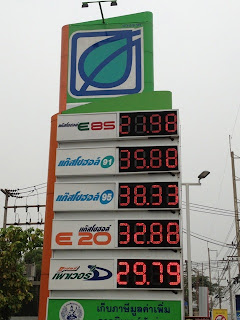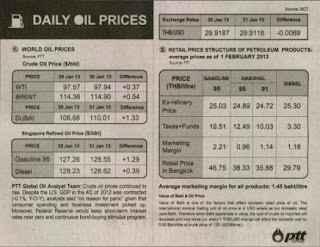 |
| Pic 1 - Price comparison |
 |
| Pic 2 - Transparency in prices |
This made me think how Thailand succeeded in implementing an Ethanol Blending Program, while countries like India continue to struggle. Both India and Thailand are democratic countries. Both have oil Companies which are largely state owned. But Oil Companies seem to have completely embraced the program in Thailand, where they regulate the price of ethanol as per the policy.
What is so special about Thailand’s Ethanol blending policy?
It is a policy which is based on taking all stakeholders on board, be it the Oil Companies or the consumers, with particular emphasis on the consumers. If you see pic1 and pic2 you will notice the transparency in the information shared with the public. The consumers know how the final price of Gasoline is determined, based on International crude price, taxes and duties. They know the relationship between the oil barrel price and Gasoline. Also, it is evident that they will end up paying much lesser if they choose Gasoline with a higher percentage of Ethanol.
At the back end, the purchase price of Ethanol is determined by the import parity price of Petrol and the price of imported Ethanol. From April 2013 onwards, the price of Ethanol will be determined by the input cost which will ensure steady supply through better viability for Ethanol producers. Apart from that the Agriculture Ministry is also ensuring that adequate feedstock is available for local ethanol producers through efficient cultivation of cassava and sugarcane, from which ethanol is derived. This is indeed very pragmatic where the entire chain of input and output is made viable, so that everyone derives benefit from the program.
Incidentally, Thailand is a large producers and exporters of chemicals. At this point, there seem no resistance from the chemical manufacturers or automobile companies.
Where did a nation of 66 million people get the courage to lead the alternative fuels program? As a nation of 1200 million with an oil import bill of US$ 140 Billion , it has taken India a fairly long time to get to 5% blending, which is scheduled for June 2013 (after a long hiatus).
Perhaps it is time for us to really see the woods for the trees?